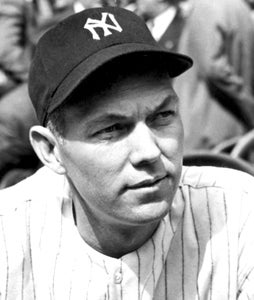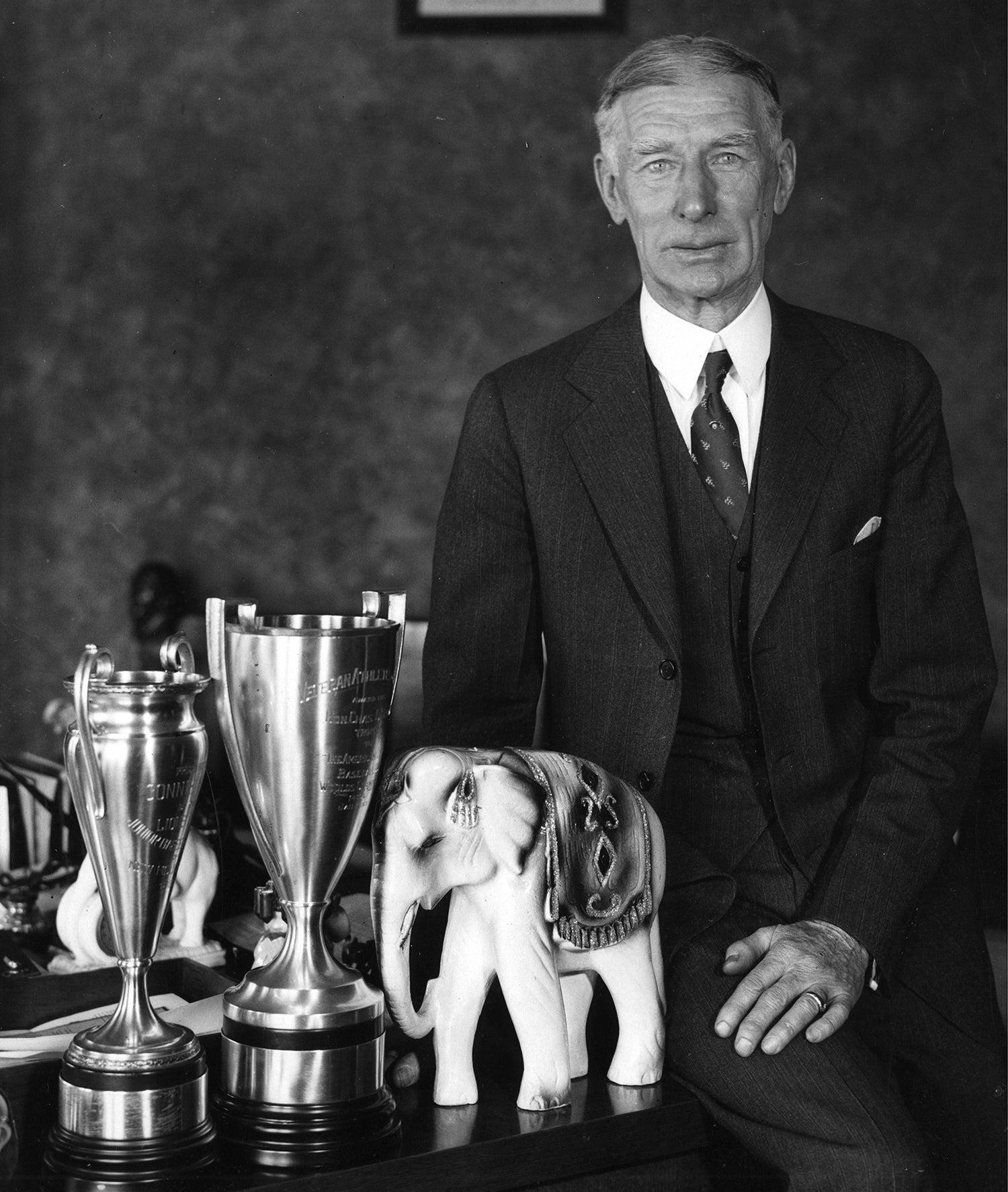If I were catching blindfolded, I'd always know when it was Foxx who connected. He hit the ball harder than anyone else.
- Home
- Our Stories
- Philadelphia A’s trade Jimmie Foxx to the Boston Red Sox
Philadelphia A’s trade Jimmie Foxx to the Boston Red Sox
From 1929-31, he was the muscle behind a great baseball dynasty.
Four years later, he was the last departure as that dynasty came to an end.
On Dec. 10, 1935, the Philadelphia Athletics traded future Hall of Fame slugger Jimmie Foxx and pitcher Johnny Marcum to the Boston Red Sox in return for Gordon Rhodes, George Savino and $150,000.
By 1935, Foxx had collected two MVP Awards and crushed 302 home runs. He belted 58 homers in 1932, two shy of Babe Ruth’s record at the time, and won the American League batting Triple Crown in 1933. His natural strength, cultivated as a boy on his family farm in Sudlersville, Md., was so formidable that Hall of Fame pitcher Lefty Gomez declared Foxx “has muscles in his hair.”
Rhodes, meanwhile, lost 20 games for Philadelphia in 1936 and retired. Savino, a catcher, never made it out of the minor leagues.
When the A’s won 107 games and captured their third consecutive AL pennant in 1931, few could have imagined that such a dominant franchise would dwell in the league’s cellar just four years later. But when the full effects of the Great Depression swept through Philadelphia and the United States, future Hall of Fame owner and manager Connie Mack was forced to sell off pieces of his club one by one.
Future Hall of Famer Al Simmons and star hitters Mule Haas and Jimmy Dykes were sold to the Chicago White Sox in 1932. The Hall of Fame battery of pitcher Lefty Grove and catcher Mickey Cochrane were shipped off the following year. By the end of 1934, the cash-strapped A’s had a losing record.
But Foxx kept hitting. Between 1932 and 1936, “The Beast” averaged 46 home runs and 144 RBI and posted a 1.144 OPS. As Ruth’s clout at the plate began to fade, Foxx became the major leagues’ most fearsome hitter.
"If I were catching blindfolded, I'd always know when it was (Jimmie) Foxx who connected,” said Hall of Fame catcher Bill Dickey. “He hit the ball harder than anyone else.”
In 1935, Foxx moved from first base to catcher part time to fill a major hole in the A’s defense. The beating he took behind the plate extracted only a minor toll from Foxx’s offensive numbers, as he walloped 36 home runs to lead the Junior Circuit for the third time in four years despite catching 26 games – his most ever in one season to that point in his career.
Still, the A’s struggled to a 58-91 record, good for last place in the American League. Mack, now 72 years old and finishing his 35th season at the helm for Philadelphia, felt he had no choice but to sell his last prized possession.
“I was the object of a lot of criticism for selling so many star players,” Mack admitted the following year. “But the public didn’t seem to realize that you don’t have to have stars to finish last. If we finished last with Foxx and all those other fellows, what was the point of having them?”
Foxx went on to have six more stellar years with the Red Sox – including a third MVP season in 1938. During his time in Boston, Foxx became a mentor for another young hitter, Ted Williams.
“If I’d had Foxx’s strength, I’d have hit a hundred extra homers,” Williams would later say.
Foxx retired in 1945 with 534 home runs – the second most of any player who retired before 1950. He was elected to the Hall of Fame in 1951.
Matt Kelly was the communications specialist at the National Baseball Hall of Fame and Museum
Online exhibit
Support the Hall of Fame
Mentioned Hall of Famers
Related Stories

#CardCorner: 1972 Topps Reggie Jackson

#CardCorner: 1967 Topps Bob Bailey

Making of a Legend

Legends, SIMPSONS Team Up for Memorable Hall of Classic

The Wright Stuff

Future Hall of Famer Roberto Alomar signs free agent contract with Baltimore Orioles
Sandberg, Golfers score for charity at Otesaga Pro-Am
BL-175.2003, Folder 1, Corr_1971_02_14
Museum Artifacts from Henry Aaron’s Career Featured at Feb. 3 Event in Atlanta to Honor Legendary Hall of Famer, Philanthropist
01.01.2023
34th Annual Otesaga Hotel Seniors Open Begins as Hall of Famer Rollie Fingers Tees Up Pro-Am
01.01.2023
Fans to Cast Their Votes for Frick Award Ballot Candidates
01.01.2023




















